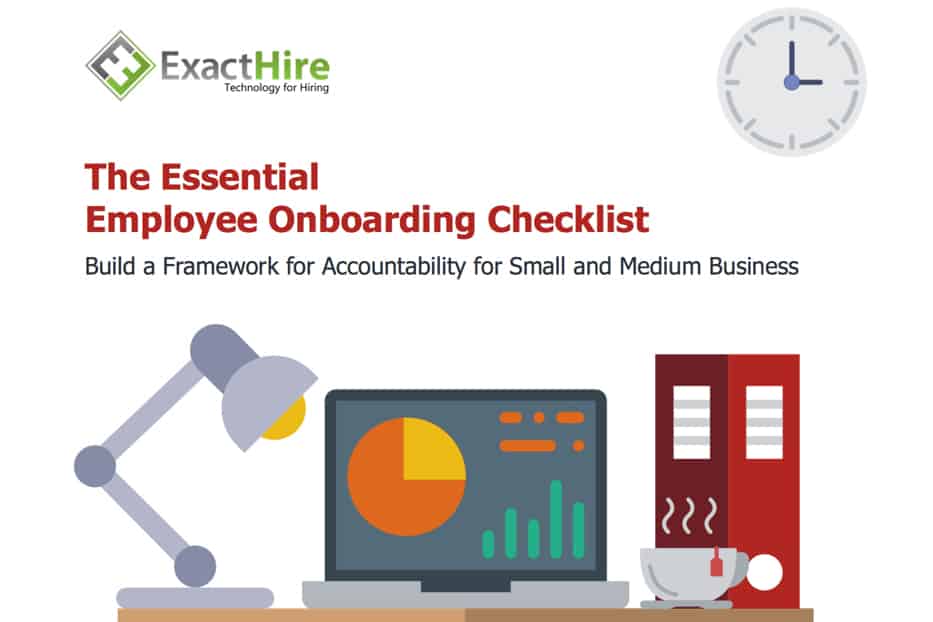Hi, I’m Jeff Hallam and today we are going to talk about a question that comes up quite frequently. How long should the employee onboarding process last? And, I think one of the things that we find most frequently is, what maybe people don’t give as much thought to as they should, is the onboarding process is really your first opportunity to make a good impression on your new employee.
And, different people have different definitions for it, so again, one of the things to understand going into this video is there’s no right or wrong to any of this. It’s just a matter of what works for your culture, for your organization, and for your new hires. However, what we do find frequently is people kind of tend to break this into two very different types of experiences. So, one of the first items that almost everybody agrees is part of onboarding is what happens in the first few days. Sometimes that can all happen and be crammed into the first day or two, sometimes it might take a week, but this definition of onboarding kind of revolves around what functionally has to be done before I can officially consider you an employee and actually have you start doing work for us.
And that’s going to include all your requisite paperwork things like a W-4, an I-9, state tax withholding forms, policies, acknowledgments…all of those would be included in that initial new hire paperwork. And it might also include things like, do I have copies of the things that I need, do I have training materials, do I have keys to the office, do I have a laptop? Whatever I might need to perform the essential functions of my job…most everybody agrees that fits into that scope of onboarding.
And, there are different ways to do this, certainly we can do it the traditional way and have a stack of papers ready for somebody, have all of these things sitting waiting and ready to go, and then there are also tools that are out there that can help automate that by bringing some technology into that equation. Whatever somebody chooses with that, again is okay, perfectly up to you, but just know that there are a couple of different ways to do that and the key to this of course is, especially for important things like I-9s, keys, laptops, etc. that none of those things get lost or fall through the cracks before that person starts or as they are first getting off to their first few days with you.
And then once you get past this initial line of demarcation, if you will, that really starts kicking into maybe a secondary definition of onboarding. And, again, both certainly fit that criteria, it’s just a matter of what works within your organization. So once we’ve gotten these initial tasks out of the way, then we start getting into more things that start getting someone more assimilated into the culture of the organization. Is there training that they need to go through, and if so, how do we make sure they’ve done that? And if it’s not all happening within the first week or two weeks, that might be training that has to happen over the course of several months.
Likewise, there might be certain benchmarks that they need to reach, trainings that they need to attend, certifications that they need to earn, sessions that they need to sit through, etc. Make sure that you’ve got a way to benchmark that and track that so that those things are actually met, and the expectations you lay out front are accorded.
Then you start getting into the things that might, again, go even more so into getting that person engrained into the organization. Opportunities for them to collaborate with others, and that could be mentoring programs, it could be group projects, it could be again, more training and certifications that are built into group types of orientations. All of these things can happen over whatever period of time you might see, so whether some of this is the first few days, some could be in the early months, some could go out six months plus to even over a year.
The key to all of this is, most everyone agrees that today, with what’s happened in the job market, and as things start to trend more toward people being more available for jobs and looking for things less frequently…when we get people we want to keep that talent, we want to get them engaged, we want to make a good first impression, and make sure that we’re getting them in here and letting them experience all the reasons they joined us in the first place. So making sure that there’s a way to execute this, whatever that way may be for you and your organization, if it’s done and done well, this can certainly be a great way to get people in, get them excited, and hopefully let them stay with your organization for a long period of time.








